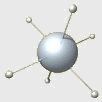
 |
Sound Night at Share
by Eric Redlinger |
Up until quite recently, performing live visuals on a computer required a fair amount of programmer know-how, a resilience to ironic requests from passers-by to "check their e-mail," and a top-of-the-line Macintosh computer. No more -- self-styled VJs and Visualists are springing up in droves as a demystification of the technology and widespread availability of video-capable laptops has led to an explosion in interest for live visuals. Helping it all come together are the 200+ video mixing software titles listed on the site audiovisualizers.com alone. But the impact goes further than just the software; to do live visuals you need content, stuff to scratch with, stuff to modify and distort, stuff to riff on. Filling this need are the legions of file trackers for BitTorrent (hands down the prince of P2P apps) that are chock full of stock image and video collections for download, not to mention just about every movie ever made, all in convenient, ready-to-play mpeg formats. Even academia is jumping into the fray: New York's Parsons School of Design is finding itself turning students away from its 'video scratching' class for the second straight semester and has since added a number of additional courses focusing on VJ-specific issues. Nowhere is this transformation of live video performance from nerdy sideshow to mainstream hip more apparent than at the weekly SHARE party at New York's OpenAir bar, the east-coast Mecca for real-time performance. The days of scrubbing John Wayne and Bruce Lee clips in Final Cut Pro in rhythm to the music (considered avant-garde just a few years ago!) have given way to elaborate video montage featuring such disparate material as scenes from Tarkovsky's Stalker, images from the infamous homeland security website, recruitment texts from the CIA, clips from the stellar online compendium of post-WWII Americana, archive.org, as well as a fair amount of abstract patterns and swirling digital pixel noise. Participants at SHARE line up their laptops against one wall and plug into a VGA port to show their work on one of the many facing flat screen displays. The in-house music is also generated live by another distinct group of laptop artists scattered around the bar's three rooms. This is the place to not just show off your latest and greatest but also to hook up with curators, interested newcomers and, of course, other real-time performers. Digital art trio screenmemory, for instance, all met as jammers at OpenAir before consolidating and taking their show on the road internationally. In a recent performance at Remote Lounge, another mainstay on the New York scene, they offered up the following visual cocktail: the Statue of Liberty, digitally removed from her perch, is transformed into a sort of digital paintbrush to fill the screen with hundreds of additional statues of liberty that then fade into murky crimson shadows. Later, the passing suburbia reflected in the rearview mirror of a vintage Buick sedan slowly melts away, revealing a squadron of fighter planes from recent Iraq footage. The frantic motioning of a civil defense volunteer from a 60s propaganda film on chemical attacks shares screen real estate with statistics on new auto sales, pictures of satellite dishes and diagrams on how to choose a new home. About half of these visual stunts are planned; the rest come about as a natural result of montaging and affecting the source material. Back at SHARE, there is now a multi-user session in progress: this means that two people from Europe have braved the 6 hour time difference and are logging in to OpenAir's a/v system via the Internet. One of them has a video camera pointed at a distant television and pixilated words and images creep across the monitors in New York as if broadcast from another planet. Then the music swells and the images begin to swirl as another participant picks them up and maps them to the faces of spinning 3D cubes whose rotational axis is linked to the bass frequencies coming out of the loudspeakers. A woman engrossed in her laptop looks up briefly from her display and calls out: "hey -- that's cool." Then she goes back to checking her e-mail.
|